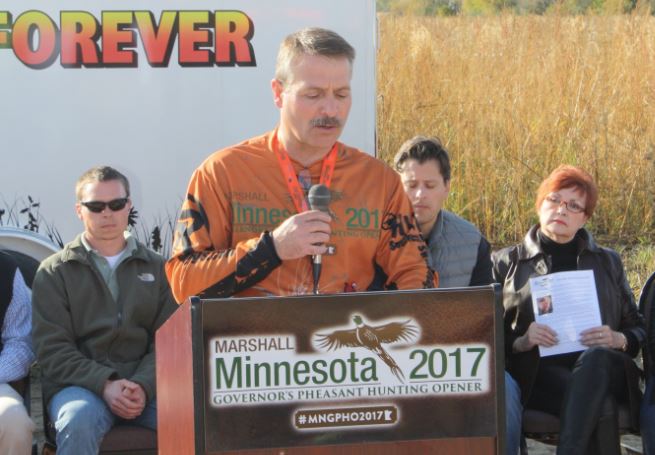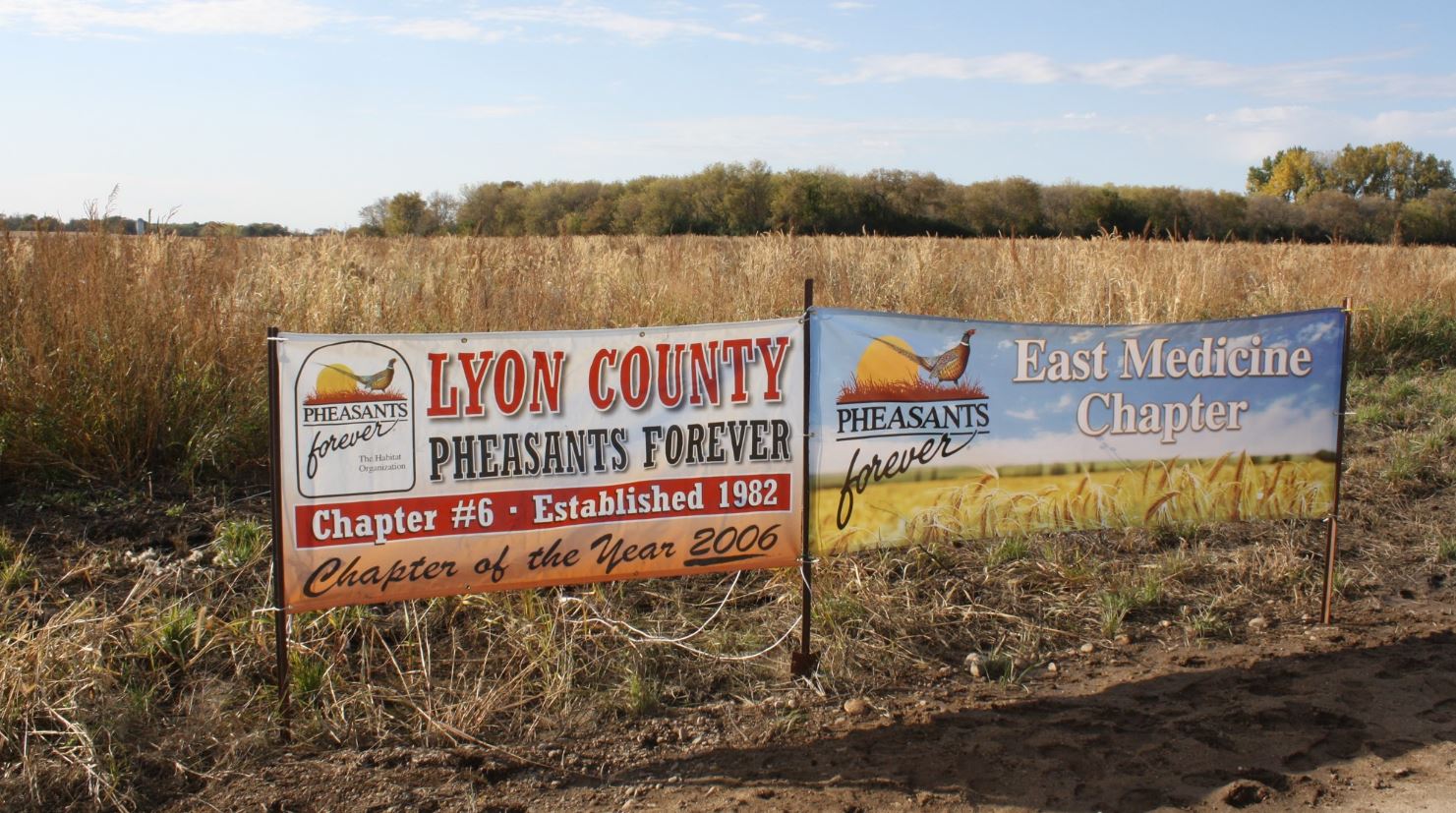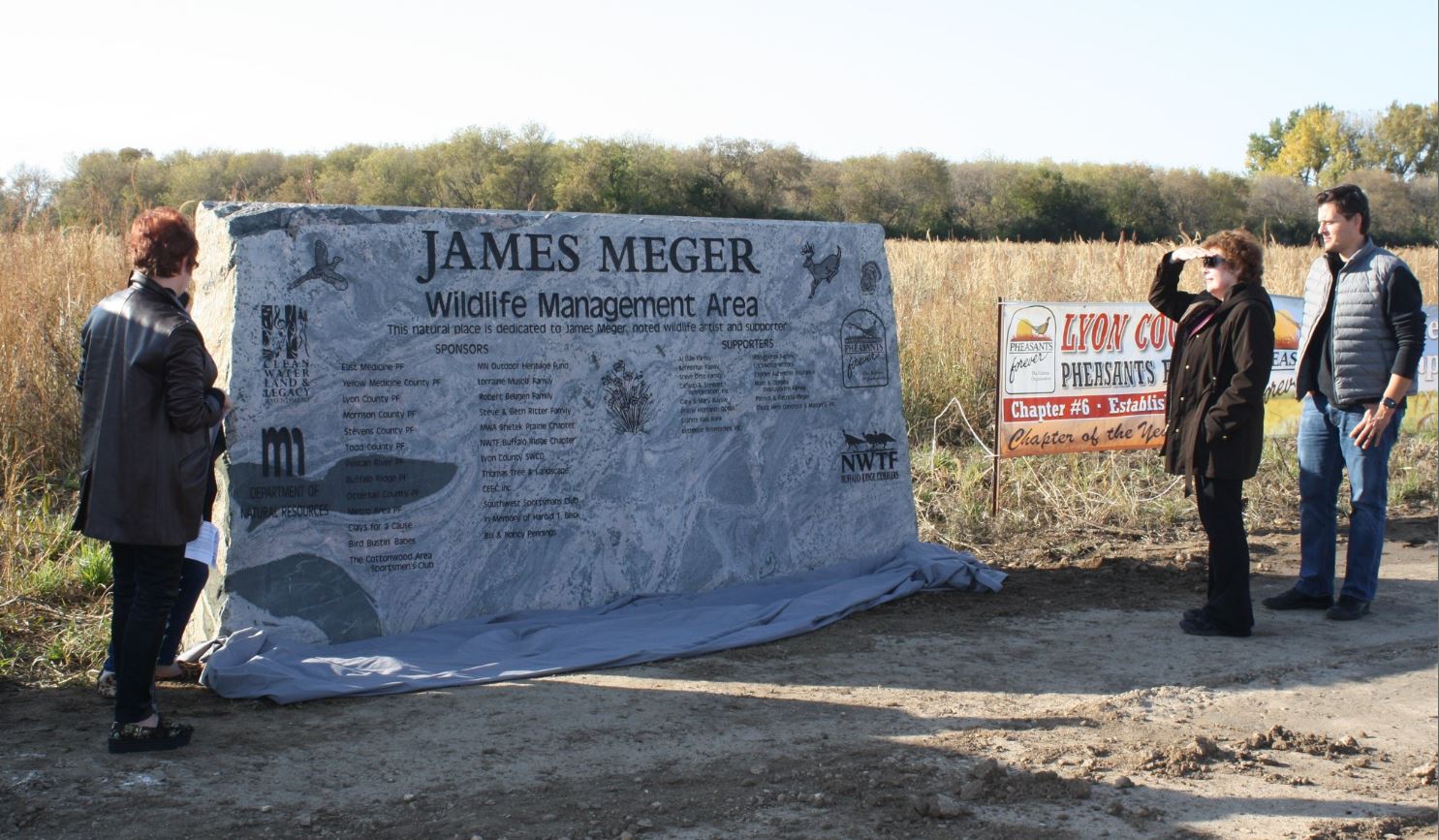James Meger Memorialized with Prime Wildlife Habitat Acreage
By Tom Carpenter
James Meger was one of the greatest wildlife artist of his generation. Hailing from the tiny burg of Minneota in southwestern Minnesota’s Lyon County, Meger loved and painted the prairie’s wildlife, especially ring-necked pheasants and canvasback ducks, and rural Americana.
Meger’s artwork graced the Pheasants Forever Print of the Year a record six times. His paintings won numerous state- and federal-level stamp competitions, raising over five million dollars for conservation over the course of his lifetime and beyond. And the dollars are still counting.
That’s impact.
Meger’s impact on habitat and conservation has been honored in a new way -- one that will forever provide habitat for wildlife and a place for hunters. A Minnesota Wildlife Management Area (WMA) was dedicated in October to kick off Minnesota Governor’s Pheasant Opener held in Marshall this year.
“With his brush strokes, Meger at once captured the beauty of nature and improved conservation,” treasurer of Lyon County Pheasants Forever, which teamed up with the Yellow Medicine Chapter on the project.

But how did the 155-acre James Meger Memorial Wildlife Area come to be? Pheasants Forever played a pivotal role, and it is a story repeated many times over across pheasant range every year.
“Our local Pheasants Forever Chapter came to the Department of Natural Resources (DNR) about creating a stand-alone WMA to honor James Meger,” said Troy Dale, assistant area wildlife manager for the DNR. “Pheasants Forever purchased the tract in 2016, then transferred ownership to the DNR for its WMA system.”
“Pheasants Forever was integral in getting the grass in,” said Dale. “Another benefit of this project is how well it will stabilize the banks of Mud Creek, which runs through the property and provides woody cover.”
“Part of the WMA will be farmed,” says Dale, “but no-till practices are required.” Land that would be marginal for crops was converted to grassland. End result? Agriculture and wildlife habitat exist in harmony.
It all sounds simple. But there was also a lot of cleanup and drudge work that had to be done too. “We removed 24 tons of concrete, metal, glass, you name it – junk,” said Dale. The 155-acre tract is a dumping ground no more.
“This is such an amazing place,” said Governor Mark Dayton, “thanks to organizations like Pheasants Forever.”
“But it’s also thanks to volunteerism,” said Dale. “People came out and got the work done.”
The James Meger Memorial Wildlife Area is located near Taunton in Lyon County, Meger’s home stomping grounds. Meger passed away in 2011 from cancer that was traced back to Agent Orange during his service in Vietnam.

After the crown of 200 or so folks had finally dwindled and disappeared, I let my little Brittany Rascal out of the truck. We took a walk. Prairie wildflowers remained blooming here and there – evidence of the tract’s summertime value to butterflies and pollinators. The old dog pounced like a puppy, chasing late grasshoppers.
I considered what this land once was, what it had become, and what it had returned to again … thanks to conservationists like Meger, grassroots organizations like Pheasants Forever, and volunteers who dig in and get their hands dirty.
As the sun hit the western horizon, a rooster sailed into the grass from a nearby standing cornfield. Hunters would be out looking for his kind, right here, in the morning. And all was good with the world.
